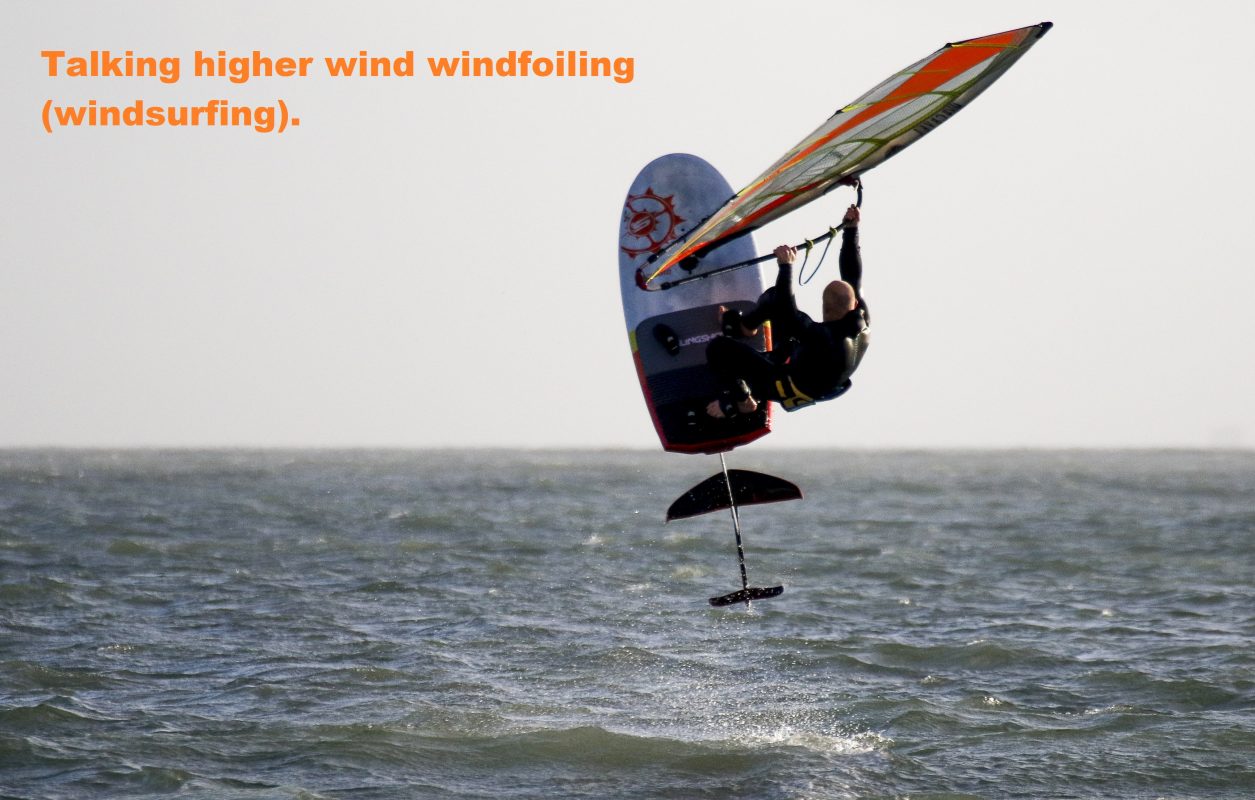Words: Tez Plavenieks
Pics: James Jagger
For the record, before we get into the meat of this article, when I refer to higher wind foiling I’m predominantly talking about 20 knots plus, up to around 30 (for most). Rather than focus on sail size I thought it better to qualify the term in wind strength. Most foilers look to flying over water in the sub-20 knot wind band, light wind foiling if you will. This is where the most ‘gains’ (additional time on the water in lacklustre conditions being one) are percieved to be gotten.
Having gone through the building blocks of getting to grips with windfoil’s initial fundamentals the most visited next step is seeing how low you can go. Most riders will be looking at windfoiling as a means to get out in ‘just’ planing conditions or less – mostly the latter as you progress. And as foiling technology advances it’s also about using as small a sail as you can get away with in those light airs (unless you’re windfoil racing which requires bigger sails for high upwind reaches and deep downwind blasts).
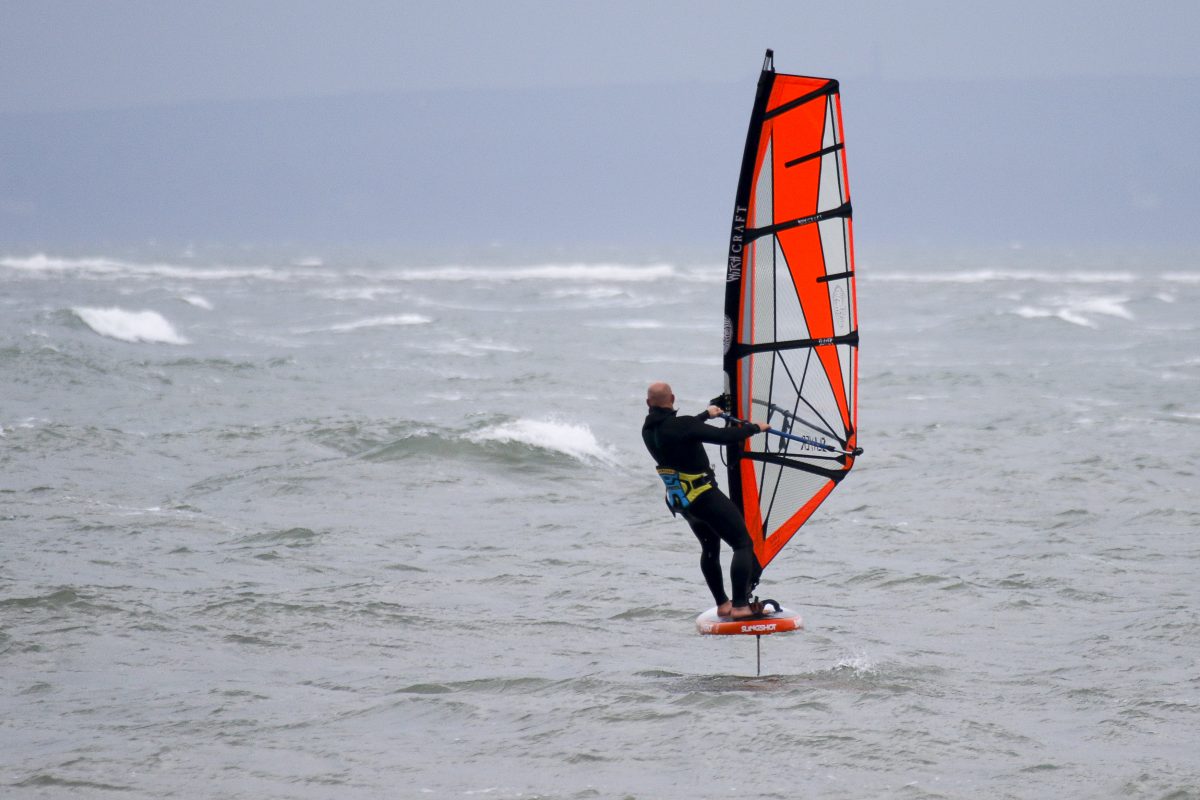
For the above to happen efficiently it’s bigger foil wings (mainly) used. Lower aspect foil wings delivers oodles of lift and carveability whereas high aspects are better for pumping, glide and don’t do a bad job on the carving front either.
As an example my own personal foiling has evolved over the last few years. Where once I’d be using a larger sail (6.5m -7m) for 10-12 knot foiling shenanigans I’m now quite happy using a 4.7m or 5.2m depending on the breeze consistency and gusts. As well as sails coming down my board size has also decreased (in both width and litres). 105L-125L foil specific boards are my chosen vehicles these days with those bigger foil wings mentioned above. For others, over time, this might also be your chosen path as well.
One of windfoiling’s criticisms is that ‘mowing the lawn’, or just going back and forth, is actually quite boring. Whilst there’s plenty you can try on foil it’s definitely the majority’s choice to simply burn and (try to) turn. Foiling gybes are a whole other story that we’ll park here for the time being.
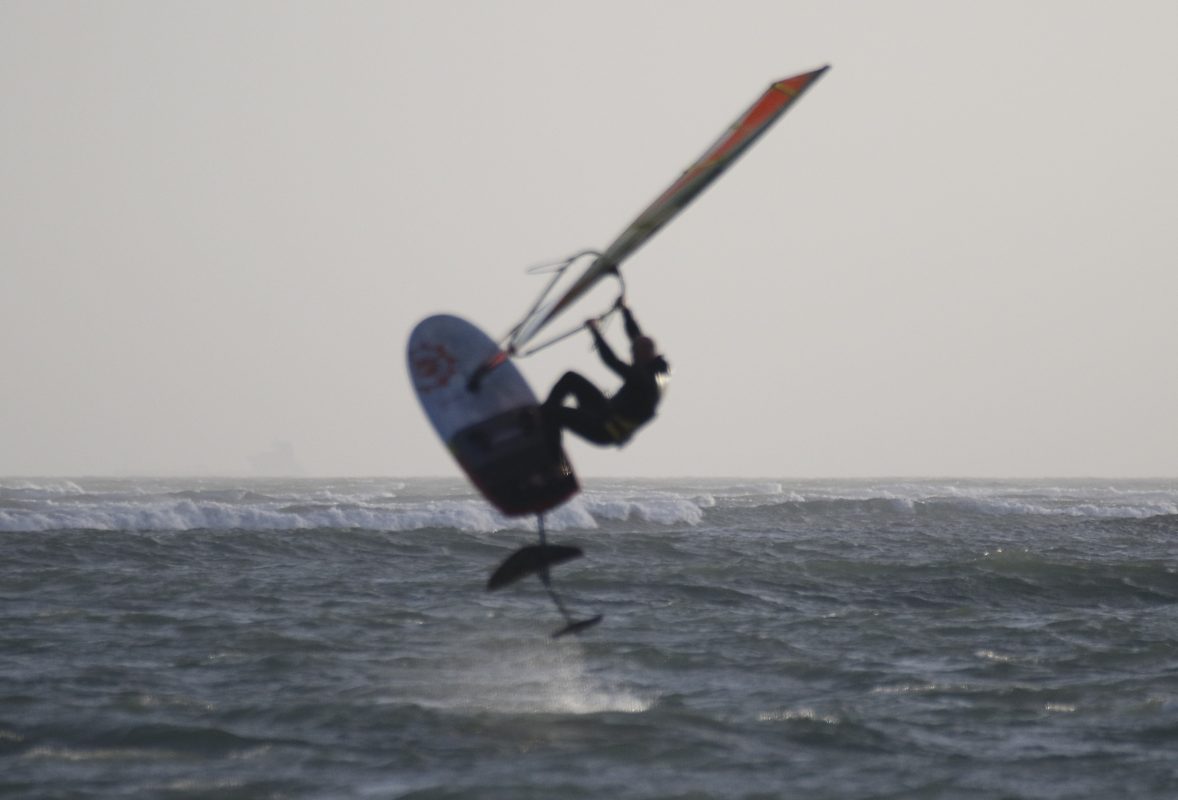
So for anyone looking at other avenues with their foiling there are plenty. Foiling jumping and loops with also wave riding being applicable.
But why would you?
Well, just as with foiling in lighter airs, you can be on much smaller gear much quicker. While others aremerrily blatting round on 5.2m’s it’s not unusual for me to be on a 3.7m or 3.3m. And let’s be honest: realistically how often are you likely to use sub-4m sails regularly when windsurfing in standard mode? As a 90kg rider being on a 3.7m usually involves a hurricane in standard windsurf mode. And 3.3m/2.9m, well, not a chance! Yet with foiling – especially in the off season when you’re more likely to get more blow – it’s now not uncommon for these sizes of sail to be used.
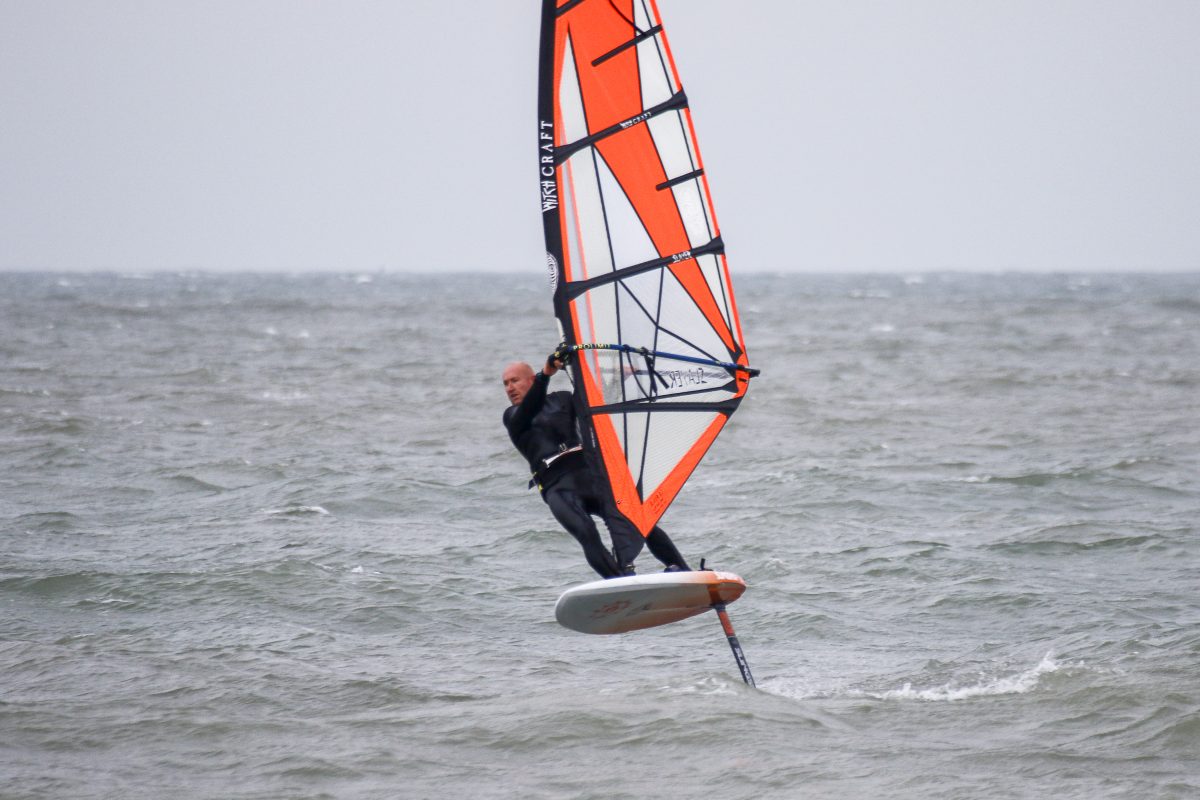
Yet, just as with all wind strengths/directions in the UK, our breeze generator can be a fickle beast. You may see a decent forecast pop up, with promises of 25 knots (usually the magic wind band for many). But all too often it might be an up and down affair, with gusts and lulls aplenty coupled with a load of current (if you sail at coastal venues). If you’re an inland rider then chances are it’ll be more holey!
Setting up your trusty, tried and tested windy kit you’ll no doubt head out and get a decent session in the bag. Yet if you’d try foiling in the same conditions you might find there’s less hassle putting yourself exactly where you need to be on the water.
Foils, as everyone knows, are upwind machines. Seemingly defying the laws of science I can start my session way downwind of where I want to be riding yet in one tack be upwind and amongst it, riding (at times) almost head to breeze. On foil it’s possible to draw many more lines across your watery canvas than before. I can head back off on downwind runs and then get back to where I was previous without hassle. And all this, don’t forget, on much smaller rigs than if windsurfing normally.
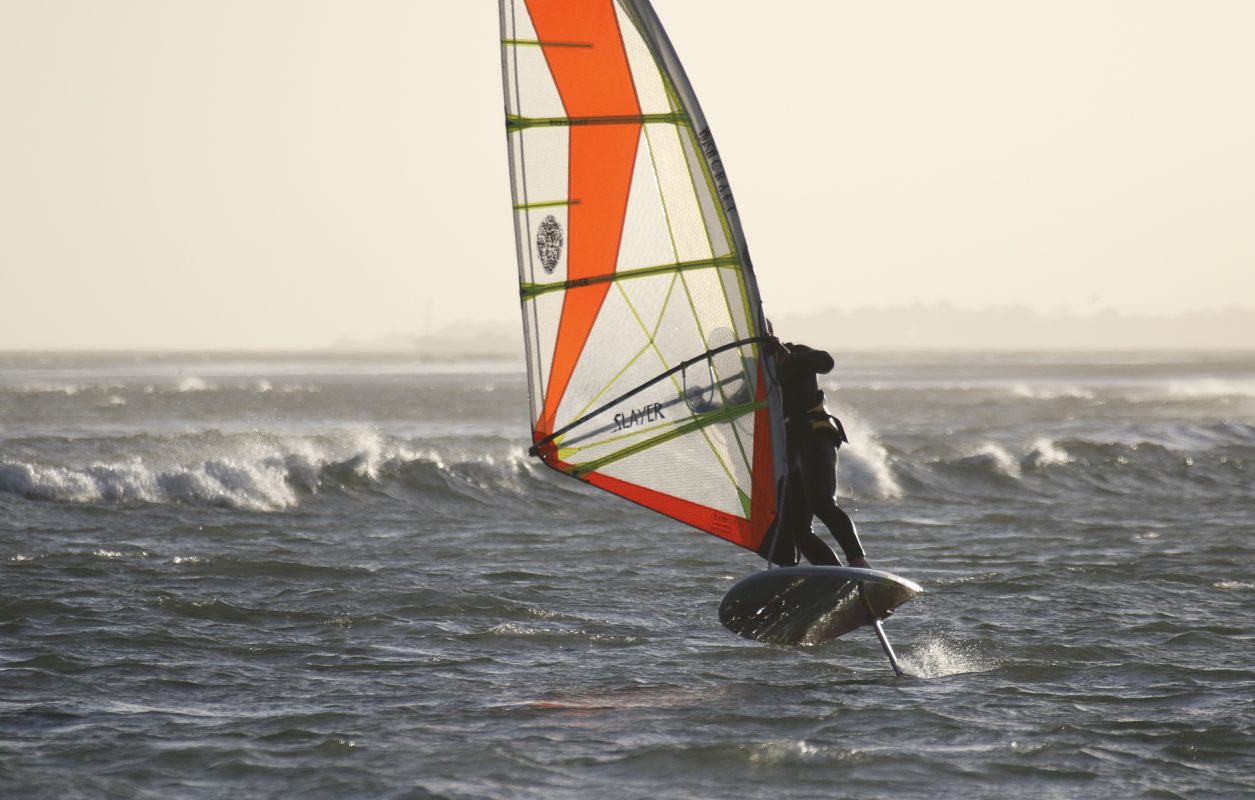
The other thing about higher wind foiling is just how reactive your kit is. It’s like someone super boosted your gear and made it twice as carveable and nimble. I’ll not lie: you’ll probs need a few sessions under your belt to get used to these new sensations. Within a short while though it’ll all come together and I guarantee you’ll be wanting more.
And then there’s waves…I’ve been windfoiling in waves often and it’s (simply put) one of the most addictive things ever! I appreciate a wave and foil mightn’t be to everyone’s taste but trust me when I say there’s nothing quite like it. I’ll leave wave windfoiling there though as that’s also a different article. (There’s also wing foiling which also makes wave riding a completely unique sensation. But, again, that’s a different topic).
Back to general higher wind foiling and one thing you should consider is the tuning of your gear before you head out. Foil wings do differ in size and depending on how strong the wind is will dictate what size you set up, if you’re fortunate enough to own multiple. And think about your rig also. It’s been communicated in the past that less downhaul helps when foiling, which it does in lighter winds. For stronger winds, however, I’d crank on some more and make sure you have enough outhaul tugged on. Due to moving more efficiently when foiling you develop more apparent wind in the sail. If your rig isn’t set right then when you come to gybe, for instance, as you slow down the apparent dips off causing the sail to react to the true wind. This can make a 4.5m feel more like a 6m when gybing as it yanks the clew away from you as its swing weight increases.
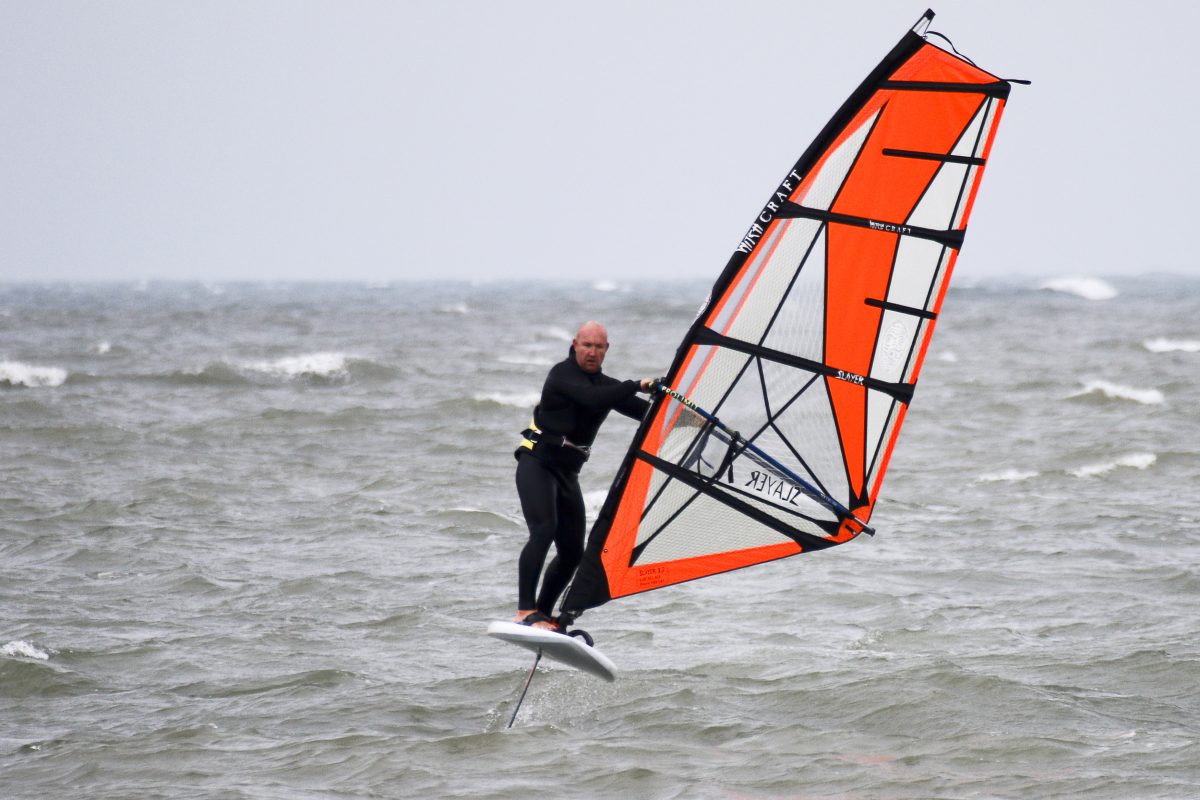
Windfoiling isn’t just about light airs these days. In fact, the challenges you find with more breeze is where it’s properly at (if a challenge is what you’re after). I’m not suggesting give up your standard windsurfing just yet. But for squiffy conditions that don’t look inviting, regardless of the forecast, windfoiling could fulfill. As some have said in the past, having access to foil gear, whatever the weather, is a way to guarantee an awesome session regardless. Mixing it up is always great as well as it keeps your riding fresh. So as far as higher wind foiling goes: try it, you might like it! Windfoiling, wing foiling, downwind foiling and so on… Do it all!
Check out more foiling goodness over on NCW’s hydrofoiling knowledge page –

